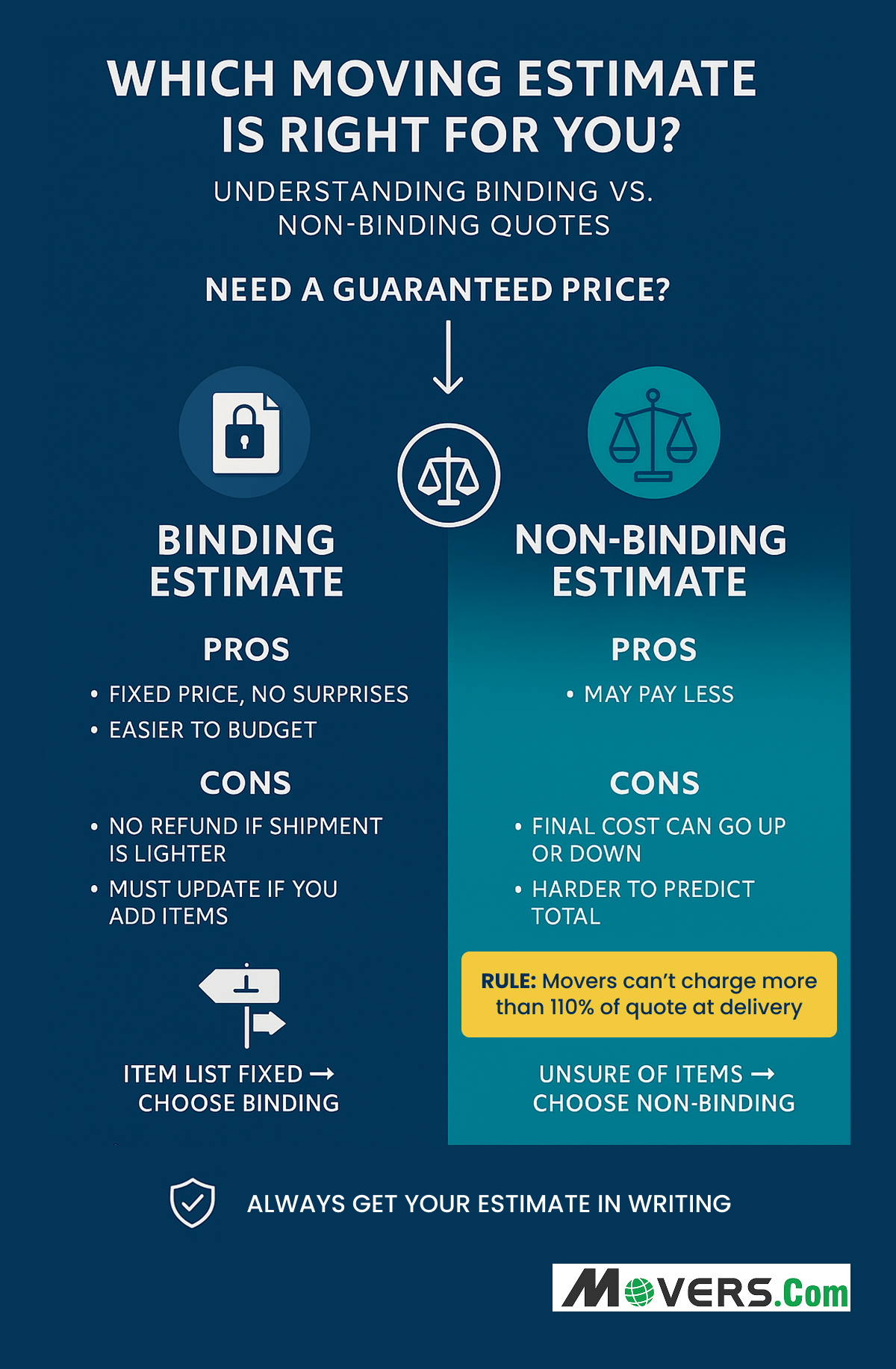If you're planning a move, one of the first things you'll do is get a quote from a moving company. But not all estimates work the same way. If you don't understand the difference, you could end up paying more than you expected.
In this guide, let us understand the two most common moving estimate types, binding and non binding, so you know what you agree to.
What is a Moving Estimate?
A moving estimate is the price the mover gives you before the job starts.
It's based on:
- The total weight or volume of your belongings
- Distance (local or long distance)
- Services requested (packing, storage, specialty items)
- Access conditions (stairs, elevators, narrow streets)
Moving estimates in the U.S. typically fall into two categories: Binding and Non Binding.
What Is a Binding Estimate?
A binding estimate guarantees the total cost of your move based on the services and inventory listed in the estimate.
Regardless of the actual weight or volume, you pay exactly what was agreed upon unless there are significant changes to the move.
PROS
- You know the price ahead of time
- You can plan your budget without worry
- There are no surprise charges at the end
CONS
- You still pay the full amount even if you move less
- If you add more items, the mover may need to write a new estimate or decide not to do the move
FMCSA Rules for Binding Estimates?
According to the Federal Motor Carrier Safety Administration, also known as FMCSA, movers must:
- Give you the estimate in writing
- Clearly label it as binding
- Charge separately for any extra services on moving day
- Tell you before adding any new charges
- Issue a new estimate or decline service if you add things they didn't plan for
Best for: Customers who expect changes to their inventory or need flexible service options.
What is a Non-Binding Estimate?
A non-binding estimate is an approximation based on the mover’s best guess.
The final cost is determined by the actual weight or volume of your items and any services performed during the move.
PROS
- You might pay less if your move is smaller
- It's easier to make last-minute changes
CONS
- The price can go up if your items weigh more than expected
- It's harder to plan your budget
What Does FMCSA Say about Payment
FMCSA says movers can’t charge you more than 110 percent of the estimate at the delivery time.
If the final cost is higher, the extra has to be billed later.
Best for: People who might change their plans or aren't sure what they’ll be moving yet
What you Need to Pay a Mover?
With a binding estimate, you pay the price you agreed to unless something major changes.
With a non-binding estimate, you only have to pay up to 110 percent of the original quote when your stuff is delivered.
Any extra charges get billed later.
These regulations apply to interstate moves (moves across state lines) and are designed to protect consumers from unexpected charges.
Important Note: With inflation and fluctuating fuel prices, access to accurate moving estimates are more critical than ever. The Federal Motor Carrier Safety Administration (FMCSA) has updated regulations to ensure more transparency in pricing. Always verify your mover's credentials and compliance with FMCSA guidelines to protect yourself.
How to Choose the Right Estimate?
Before you agree to anything, ask yourself:
- Is the estimate binding or non binding
- Does it include all your items and service
- What happens if you make changes before or on moving day
Quick tip: Always get the estimate in writing. Ask for an in-person or video survey, not just a phone call.
Conclusion
If your inventory is set and you want a predictable price, go with a binding estimate. If you're still figuring things out or might need to adjust your move, a non-binding estimate gives you more flexibility.
Either way, make sure your mover follows FMCSA rules and explains everything clearly before you sign.
Get a Moving Quote You Can Trust
Mover.com connects you with licensed movers who offer both binding and non-binding estimates. Whether you're looking for flexibility or a set price, you'll find a quote that fits your move.
